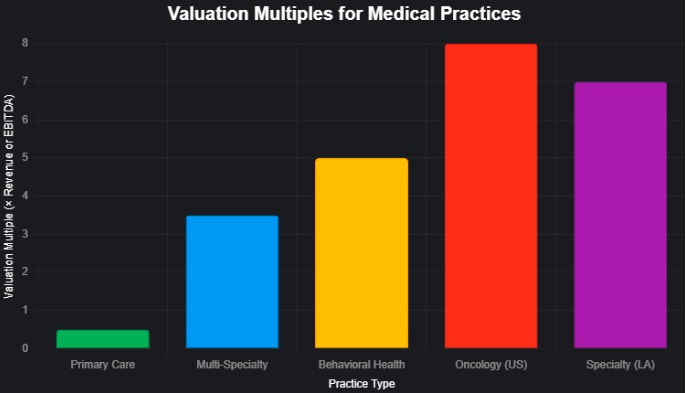In the vibrant heart of Southern California, where innovation meets diversity, Los Angeles offers unparalleled potential for healthcare practitioners ready to transition their practice. Selling a medical practice in this vibrant metropolis is both a strategic financial move and a personal milestone. The region’s saturated market and rigorous legal landscape make it crucial for physicians to understand the process, obligations, and opportunities that come with such a significant decision.
If you’re preparing for this journey, here’s what you need to know about navigating the path to a successful medical practice sale in California.
Understanding the Landscape of Selling a Medical Practice in LA
Selling a medical practice in Los Angeles demands more than a business listing and handshake deal. California-specific laws, privacy protections, and stringent licensure standards shape the region’s regulatory environment. Buyers, often hospitals, healthcare groups, or independent investors, expect well-documented operations, clear patient transition strategies, and complete transparency. The stakes are high, but so are the rewards.
According to the JLL, Los Angeles saw intense activity in the medical office market in 2024, with outpatient facility sales rising by 30% and surpassing 650,000 square feet.
This means demands for medical office space in Los Angeles grew significantly in 2024, indicating strong investor interest and a thriving healthcare real estate market.
Assessing the Value of Your Medical Practice
Before putting your practice on the market, it’s critical to understand its worth. A comprehensive valuation considers more than just revenue. It includes goodwill, patient volume, payer mix, staff contracts, equipment, and office location.
Start by preparing at least three years of tax returns, income statements, and balance sheets. This will not only help determine the value but also make your medical listings more appealing in the broader healthcare mergers and acquisitions (M&A) marketplace.

Here is a chart showing estimated valuation multiples (based on revenue or EBITDA) for different types of medical practices:
- Primary Care: Typically valued at around 0.5× revenue.
- Multi-Specialty: Mid-sized practices often sell for ~3.5× EBITDA.
- Behavioral Health: Attractive specialty, can reach ~5× EBITDA.
- Oncology (US Trend): Nationally, over 925 practices acquired in recent years, often ~8× EBITDA.
- Specialty (Avg in LA): High-demand specialties in Los Angeles may sell for ~7× EBITDA.
Complying with Legal and Ethical Requirements
When closing a medical practice in California, physicians must follow strict state guidelines to avoid liability. HIPAA regulations, state medical board rules, and Medicare/insurance contract termination protocols must all be followed carefully.
Don’t forget to send a closing medical practice letter to patients well in advance. This communication should notify patients of the transition, provide options for continuity of care, and indicate how records can be accessed or transferred. The AMA guidelines for physicians leaving practice also recommend offering assistance in transitioning patients to another provider.
Building a Comprehensive Exit Strategy
Selling your practice is more than a transaction; it’s a transition. You’ll need a robust closing medical practice checklist to ensure a smooth handover. Key items include:
- Contract termination dates
- Lease transfer agreements
- Staff communication and retention plans
- Record keeping compliance
- Notification to payers and vendors
By following a checklist tailored for Los Angeles-based physicians, you can prevent compliance missteps and enhance buyer confidence.
Marketing the Practice to the Right Buyer
How to sell a medical practice in a competitive market? You must stand out without compromising patient trust. Craft a compelling narrative about your practice’s history, patient base, and community reputation. Highlight any special services or technologies that add value.
Strategic Medical Brokers, a trusted name in healthcare transactions, connects sellers with qualified buyers while navigating compliance, confidentiality, and negotiations. We are a team of trusted medical practice brokers offering local insights for LA physicians seeking a seamless transition.
To boost visibility, ensure your practice appears in targeted medical listings and is positioned accurately in healthcare M&A directories. Add high-quality photos of your facility, detailed practice stats, and neighborhood demographics to appeal to investor interest.

Navigating Due Diligence and the Sale Process
Due diligence is the buyer’s chance to examine your practice under a microscope. Be prepared for questions about compliance history, malpractice coverage, licensure, EHR systems, and staff credentialing. This can make or break a deal.
The sale process typically unfolds in four stages:
- Initial evaluation and marketing
- Buyer identification and vetting
- Due diligence and negotiations
- Contract finalization and closing
Each step demands patience, precision, and the right advisors by your side. In Los Angeles, the volume of interest may be high, but quality buyers are looking for professionalism and clarity.
Handling the Transition and Patient Continuity
After finalizing the deal, the work isn’t over. Ensure that your staff, referral partners, and patients feel supported during the handover process. Timely notice, consistent communication, and scheduled introductions to the new provider can make all the difference.
Many LA-based sellers also consider part-time transitions, where the outgoing doctor remains on board temporarily. This reassures patients, helps with staff adjustments, and smooths billing operations. Following AMA guidelines on a physician leaving practice, document all transition plans and timelines clearly.
FAQs
Start by reviewing the state’s legal requirements and preparing a checklist for closing a medical practice. Notifying patients and managing medical records should be prioritized early in the process.
Your letter should include the closing date, new provider details (if available), and instructions on how patients can request or transfer their records. Maintain a respectful tone and follow HIPAA guidelines.
The AMA guidelines on a physician leaving practice emphasize patient notification, record access, and arrangements for ongoing care. They also recommend maintaining clear documentation during transitions.
By presenting clean financials, strong patient retention data, and a professional presentation through medical listings, your practice becomes more appealing in the competitive Los Angeles market.
The sale process can range from a few months to over a year, depending on practice type, buyer readiness, and legal complexities. Working with experienced advisors helps streamline the timeline.
Summary: The Road Ahead
Selling a medical practice in Los Angeles involves more than just listing your clinic; it’s about aligning with market trends, maintaining ethical responsibility to patients and staff, and executing a strategic vision for the future. In a city as competitive and healthcare-focused as Los Angeles, physicians must navigate a blend of legal, financial, and emotional considerations.
Closing a medical practice in California is an opportunity to transfer your legacy, built over years of dedication, into capable hands. With proper planning, this transition can bring both financial reward and personal satisfaction, ensuring your patients continue to receive quality care while you move confidently toward the next chapter of your journey.









